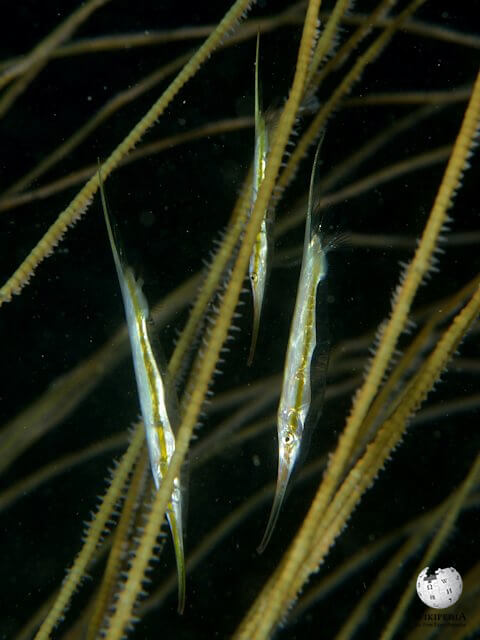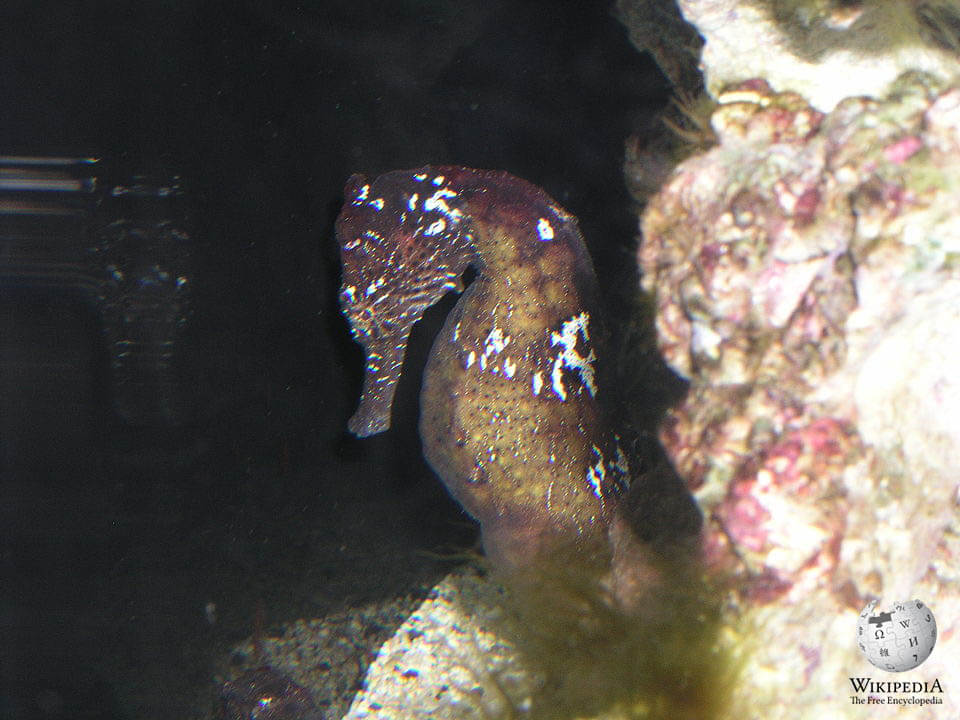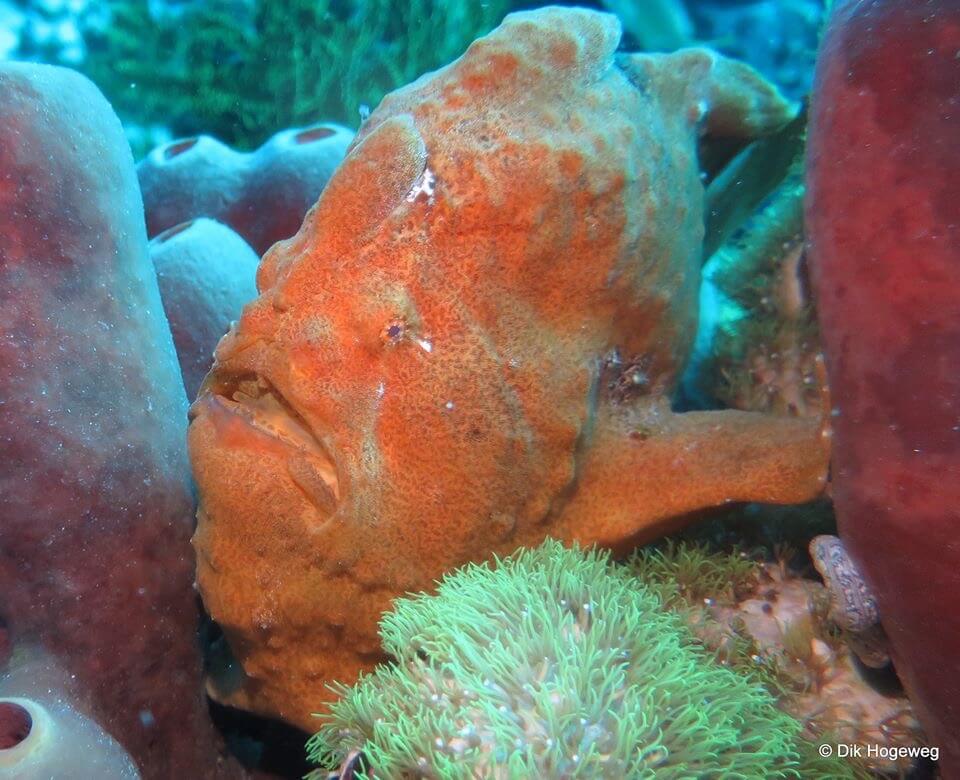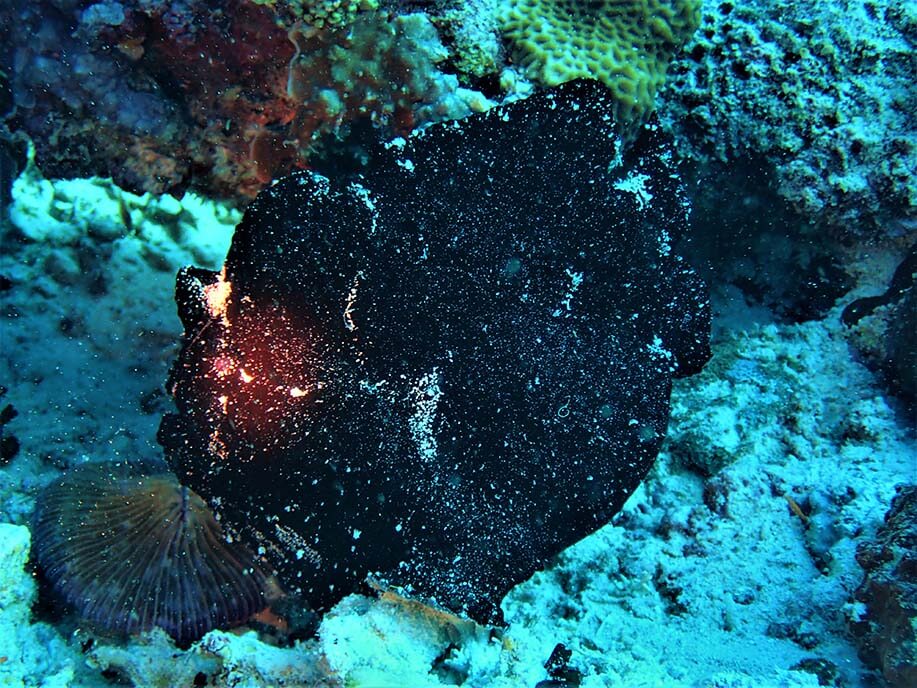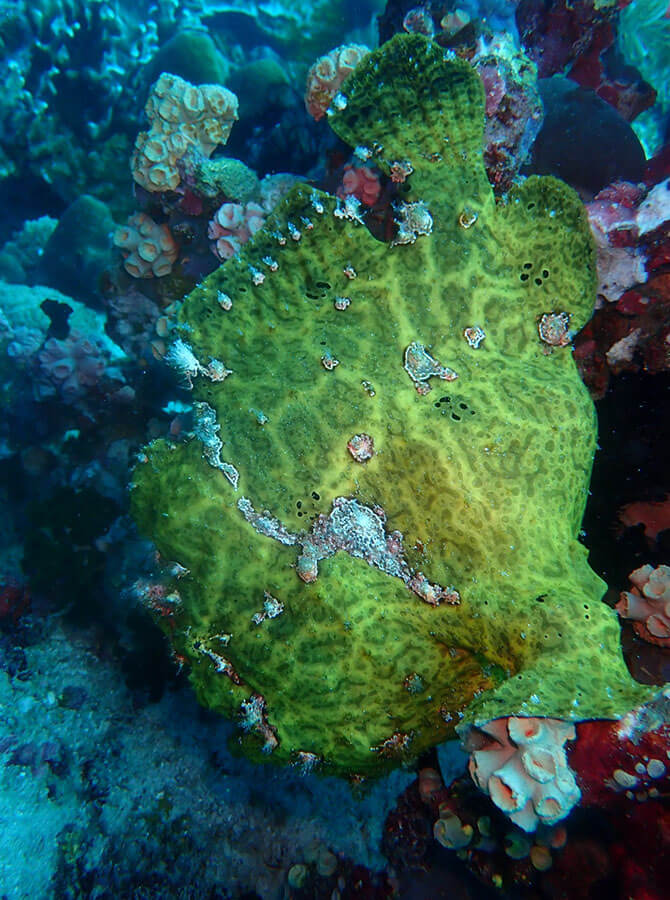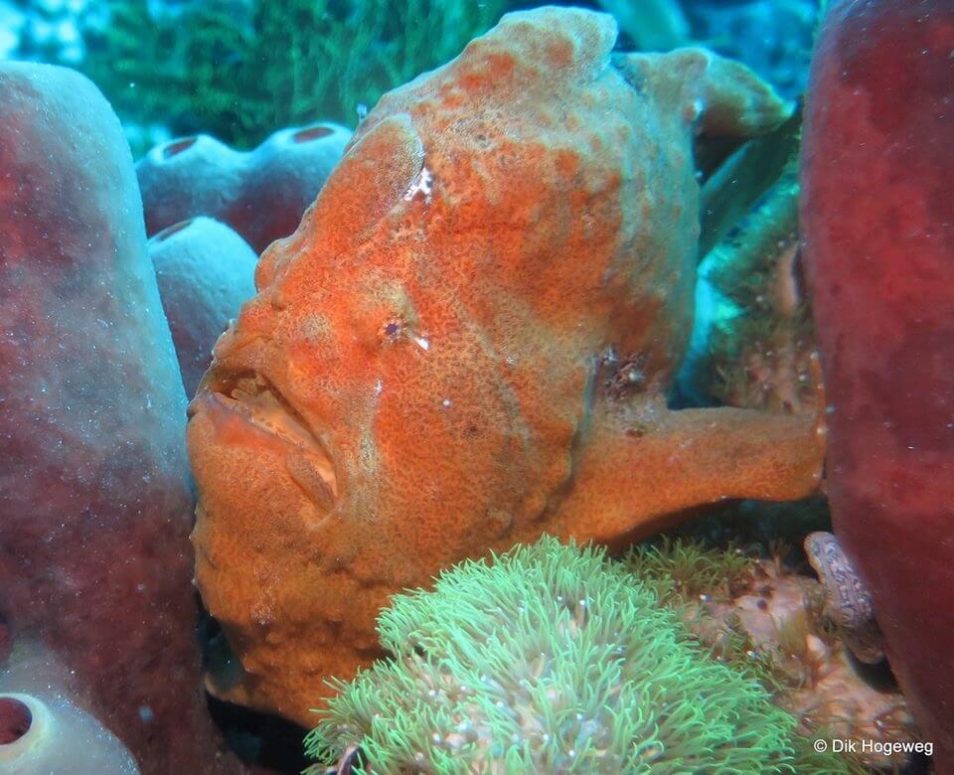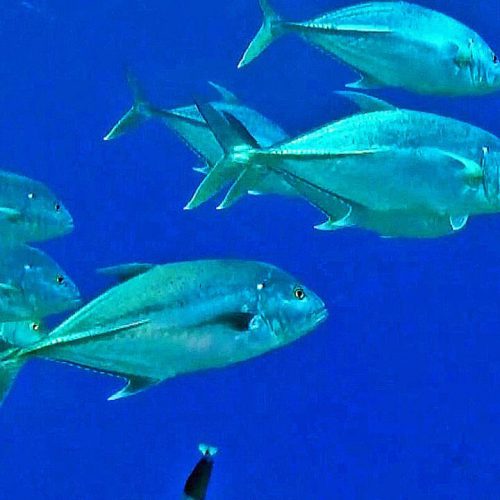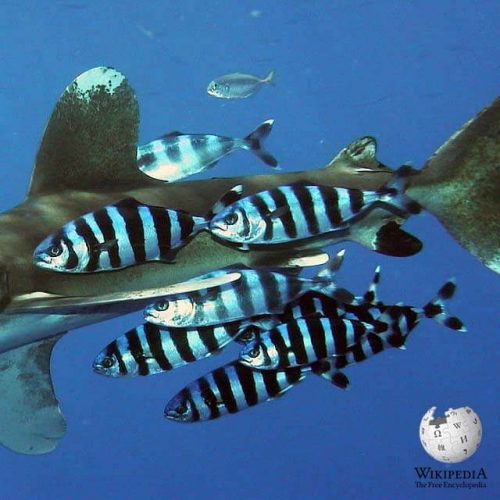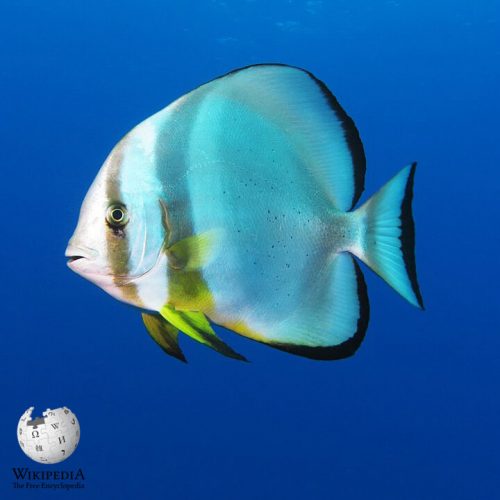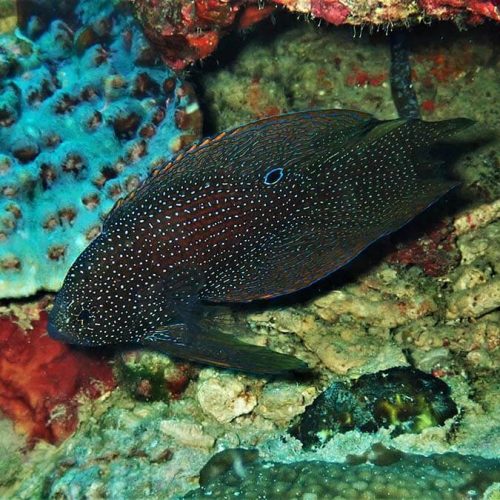Contents

Commerson's frogfish or the giant frogfish, Antennarius commerson, is a species of euryhaline ray-finned fish belonging to the family Antennariidae, the frogfishes. This fish is found in the Indo-Pacific region.
Taxonomy
Commerson's frogfish was first formally described in 1798 as Lophius commeron by the French naturalist Bernard Germain de Lacépède with its type locality given as Mauritius.[2] Within the genus Antennarius this species belongs to the Antennarius pictus group.[3] The 5th edition of Fishes of the World classifies the genus Antennarius in the family Antennariidae within the suborder Antennarioidei within the order Lophiiformes, the anglerfishes.[4]
Etymology
Antennarius commerson has the genus name Antennarius which suffixes -ius to antenna, an allusion to first dorsal spine being adapted into a tentacle on the snout used as a lure to attract prey. The specific name honours Philibert Commerçon, the French naturalist whose note Lacépède used to describe this species in 1798 and propose the French name Lophie commerson, this was latinised in a book written anonymously in the same year, although name is often erroneously attributed to Pierre André Latreille in 1804.[5]
Description
Commerson's frogfish grows up to 38 cm (15 in). Like other members of its family, it has a globular, extensible body. The soft skin is covered with small dermal spinules. Its skin is partially covered with a few small, wartlike protuberances, some variably shaped, scab-like blotches, and a few, small eye spots (ocelli) reminiscent of the holes in sponges. Its large mouth is prognathous, allowing it to consume prey as large as itself. Their coloration is extremely variable, as they tend to match their environments. Frogfish can change their coloration in a few weeks. However, the dominant coloration goes from grey to black, passing through a whole range of related hues, such as cream, pink, yellow, red, and brown, and also usually with circular eye spots or blotches that are darker than the background. Juvenile specimens can easily be confused with related Antennarius maculatus and Antennarius pictus. To distinguish these species, A. maculatus usually has red or orange margins on all fins, while A. maculatus has numerous warts on the skin, and A. pictus is covered with ocelli. A. pictus has three eye spots on its caudal fin.[6]
The first dorsal spine, the illicium, is modified for use as a fishing rod. Its extremity is endowed with a characteristic esca (lure), which resembles a small fish or shrimp with a pinkish to brownish coloration. The illicium is twice the length of the second dorsal spine and is often darkly banded. The second dorsal spine is practically straight and is mobile, the third one is bent towards the back of the body, and both are membranously attached to the head. They are well separated from each other and also from the dorsal fin.[7]
Distribution and habitat
Antennarius commerson lives in the tropical and subtropical waters from the Indian Ocean to the eastern coasts of the Pacific Ocean.[8] It is found in lagoons and sheltered rocky and coral reefs. They are usually associated with big sponges, on underwater ropes, on jetty pillars, or any structures down to 70 m (230 ft) deep, with an average occurrence at 20 m (66 ft) deep.[9]
Feeding and behavior
As all frogfishes, A. hispidus is a voracious carnivore which attacks any small animals that pass within range, mainly other fish, but sometimes even congeners. Commerson's frogfish has a benthic and solitary lifestyle. They gather during the mating period, but do not tolerate each other any more after the act of fertilization. The female can kill or eat the male if he stays close.[7] It uses a small tuft of flattened appendage as a fishing lure.[10]
References
- ^ Pietsch, T. (2022). "Antennarius commerson". IUCN Red List of Threatened Species. 2022: e.T67968507A67970897. doi:10.2305/IUCN.UK.2022-2.RLTS.T67968507A67970897.en. Retrieved 30 July 2023.
- ^ Eschmeyer, William N.; Fricke, Ron & van der Laan, Richard (eds.). "Species in the genus Antennarius". Catalog of Fishes. California Academy of Sciences. Retrieved 27 March 2024.
- ^ "(Latreille, 1804) Giant Frogfish (Commerson's Frogfish) - Riesen Anglerfisch". www.frogfish.ch. Teresa Zubi. Retrieved 27 March 2024.
- ^ Nelson, J.S.; Grande, T.C.; Wilson, M.V.H. (2016). Fishes of the World (5th ed.). Hoboken, NJ: John Wiley & Sons. pp. 508–518. doi:10.1002/9781119174844. ISBN 978-1-118-34233-6. LCCN 2015037522. OCLC 951899884. OL 25909650M.
- ^ Christopher Scharpf (14 November 2022). "Order LOPHIIFORMES (part 1): Families LOPHIIDAE, ANTENNARIIDAE, TETRABRACHIIDAE, LOPHICHTHYIDAE, BRACHIONICHTHYIDAE, CHAUNACIDAE and OGCOCEPHALIDAE". The ETYFish Project Fish Name Etymology Database. Christopher Scharpf. Retrieved 27 March 2024.
- ^ EOL: Frogfishes
- ^ a b Theodore W. Pietsch; David B. Grobecker (1987). Frogfishes of the world. Stanford University Press. ISBN 9780804712637.
- ^ EOL: Frogfish: distribution
- ^ EOL: Frogfish: habitat
- ^ Dianne J. Bray & Vanessa J. Thompson, 2011, Giant Anglerfish, Antennarius commerson, in Fishes of Australia, accessed 07 Oct 2014, http://www.fishesofaustralia.net.au/home/species/2846
External links
- Froese, Rainer; Pauly, Daniel (eds.). "Antennarius commerson". FishBase. April 2012 version.
- Frogfish.ch
- Fishbase.org
- MarineSpecies.org
- Cornu.free.fr
- Photos of Commerson's frogfish on Sealife Collection

